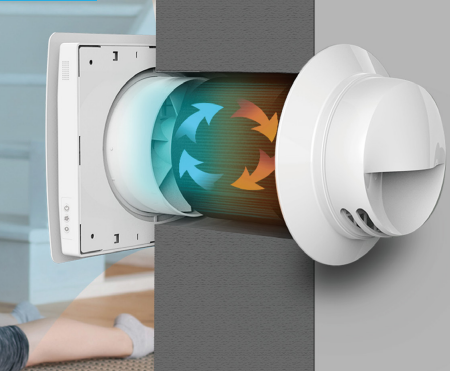The Most Common Questions Homeowners Ask About HRV
The All-Inclusive Guide to the Uses of Heat Recovery Ventilation in Modern Structures
Heat Recovery Ventilation (HRV) systems represent a significant innovation in developing technology (HRV Heat Recovery Ventilation). They supply a method for trading stale indoor air with fresh exterior air while reducing power loss. This technique not only boosts indoor air top quality but additionally contributes to power efficiency in both property and commercial structures. Understanding the different applications and benefits of HRV can disclose its vital role in contemporary design and sustainability initiatives. The effects of this technology deserve exploring additionally
Understanding Heat Recovery Ventilation Solutions

Several modern buildings prioritize energy effectiveness, comprehending warmth healing ventilation (HRV) systems is important for optimizing interior air high quality and reducing power intake. HRV systems work by moving heat from stale interior air to incoming fresh air, successfully keeping comfy interior temperature levels while lessening power loss. These systems contain a warmth exchanger, followers, and ductwork that assist in the flow of air. Throughout winter, HRV systems catch and recycle warm from the outgoing air, while in summertime, they can assist cool down inbound air. By continuously trading air, HRV systems additionally lower moisture and the concentration of indoor pollutants. Proper installment and upkeep of HRV systems are vital for their effectiveness and efficiency in enhancing overall structure efficiency and comfort.
Benefits of Heat Recovery Ventilation
Heat recovery ventilation systems supply countless benefits that improve both energy efficiency and interior air high quality in modern buildings. By recording and recycling energy from exhaust air, these systems significantly reduce heating & cooling expenses, resulting in lower energy intake. They preserve a stable circulation of fresh exterior air, lessening the risk of interior air toxins and allergens. This continuous exchange assists regulate humidity degrees, stopping mold development and ensuring a much healthier living atmosphere. In addition, HRV systems add to sustainability goals by lowering overall carbon impacts. Their capability to optimize air flow without sacrificing thermal convenience makes them a beneficial enhancement to contemporary building style, promoting both economic and ecological advantages.
Applications of HRV in Residential Buildings
As house owners progressively prioritize energy effectiveness and indoor air high quality, the applications of heat recuperation air flow (HRV) systems in domestic buildings have ended up being more common. HRV systems are specifically helpful in firmly secured homes, where maintaining fresh air circulation is vital for avoiding moisture buildup and interior toxins. They properly move warmth from outward bound stale air to inbound fresh air, minimizing energy expenses related to cooling and heating. Additionally, HRVs can enhance comfort levels by controling humidity and temperature. They are likewise versatile for numerous residential layouts, including single-family homes and multi-unit buildings. Generally, integrating HRV systems supports sustainable living practices while making sure a healthier indoor environment for residents.
HRV in Commercial and Commercial Settings
In business and commercial setups, the implementation of heat recovery ventilation (HRV) systems has become progressively vital for maximizing power effectiveness and preserving air quality. These systems effectively move warmth from exhaust air to incoming fresh air, decreasing the need for added home heating or cooling. This not only reduces energy prices however view publisher site also adds to sustainability campaigns. Industries such as manufacturing, warehousing, and office complex benefit greatly from HRV systems, as they aid manage temperature level and humidity levels, making sure a comfortable and productive setting. HRV systems aid in getting rid of pollutants and excess moisture, improving indoor air high quality. As regulations around air top quality become more stringent, the adoption of HRV technology is most likely to expand, making it an essential element of modern-day industrial and commercial infrastructure.
Future Fads in Heat Recovery Ventilation Technology

Frequently Asked Questions
Exactly How Does Heat Recovery Ventilation Influence Indoor Air High Quality?
Heat recovery ventilation considerably boosts indoor air quality by continuously exchanging stagnant interior air with fresh outside air while recuperating energy. This process lowers toxins, keeps excellent moisture levels, and ensures a healthier environment for occupants.
Can HRV Equipments Be Set Up in Existing Buildings?
HRV systems can certainly be installed in existing structures. Retrofitting may require alterations to ductwork and air flow designs, but it substantially improves energy performance and indoor air quality, making it a sensible choice for older structures.
What Upkeep Is Required for HRV Systems?

Are There Specific Climates Where HRV Is A Lot More Effective?
Heat recovery ventilation systems are specifically efficient in environments with considerable temperature distinctions between periods. These systems optimize power effectiveness by recovering warmth from exhaust air, making them suitable for both cold and reasonably warm settings.
Exactly How Do HRV Systems Affect Power Bills?
